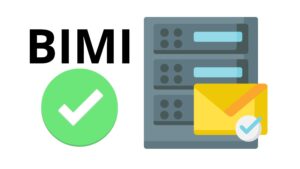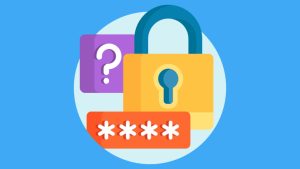Just like in a real physical world, criminals also exist in the virtual world of computers! And let me assure you, they are always one step ahead of all systems. Malware!
In this article, we will look at the malware used by criminals to commit their crimes in computer systems. And then how to avoid them.
What is Malware?
Malware, also known as “malicious software” is a generic term that describes any computer program or malicious code that can be harmful to systems.
You should not confuse the terms malware and virus. Malware is a term that refers to any type of malicious software, regardless of how it works; its intent or how it is distributed.
A virus is a specific type of malware that automatically replicates itself by inserting its code into other computer programs.
Malware is often created for the purpose of compromising a computer system without the consent of the system owner.
Information security, we talk about it! – Cybersecurity (dir-tech.com)
Different types of malware
Malware is divided into several categories! Depending on how they are introduced to the system and how they propagate. The most common types of malware are:
- Virus: This is the most common type of malware that can run and spread by infecting other programs or files in your computer.
- Ransomware: Software that infects your system and encrypts your data (locks access to your data). The cybercriminals behind the program then demand a ransom in exchange for the key to decrypt your data. It works in the same way as the kidnap-for-ransom system in the real world. If you do not pay the ransom, you will also lose your data.
RAM memory and hard disk, what’s the difference? – Storage – Tips (dir-tech.com)
- Trojan horse: A Trojan horse is designed to appear as a normal software, but can access your system. Once activated after installation, Trojans can perform their malicious functions on your computer (such as stealing or damaging your data).
- Keylogger: also called system monitors, is a malicious software that can track almost everything you do on your computer. This includes emails, open web pages, programs and keystrokes. If a criminal (hacker) takes remote control of your computer with keylogger, he will be able to do everything you do with your computer.
- Rootkit: it is a malicious software capable of gaining administrator-level access to your system. Once installed, the program gives criminals root or privileged access to your system. Rootkit extremely difficult to detect and almost impossible to remove without formatting the system.
- Botnets: for “robot network”, these are networks of infected computers under the control of criminals using control servers. Botnets are very versatile, able to maintain resiliency through redundant servers and by using infected computers to relay traffic. For example, botnets can be used to overload your website and make it crash.
What features of a computer to choose? – Tips (dir-tech.com)
- Worm: can self-replicate without a controller and usually spreads on a computer network without any interaction from the malware authors. It is similar to a virus, but does not require any human intervention to run and propagate in your network. A worm is capable of spying on your computer, offering a backdoor to hackers or destroying your data.
- Spyware: it is a spyware able to collect your information and data from your computer. Criminals use this software to monitor you or observe your activities without your knowledge.
- Adware: it is an extension software that tracks your browser and your browsing history in order to display contextual ads or advertising banners that encourage you to make a purchase. For example, an advertiser may use your cookies to track the web pages you visit to better target advertising.
How to detect malware?
It is possible to detect some malware on your system.
You will observe unusual activity such as:
- A sudden loss of disk space.
- Abnormally slow speeds.
- Repeated crashes or lockups.
- Or an increase in unwanted Internet activity and non-stop pop-up ads.
Antivirus or antimalware software can be installed on your computer to detect and remove malware. Antivirus software can provide real-time protection or detect and remove malware by running routine scans of your system.
For example, Windows Defender is a Microsoft anti-malware software included in your Windows 10 or 11 operating system. It protects your computer from threats such as spyware, adware and viruses.
However, Windows defender is free and therefore less reliable, so it is recommended to buy a paid antivirus for your computer.
How to remove malware?
As I mentioned above, many security (antivirus) software products are designed to detect and prevent malware, as well as remove it from your infected system.
Malwarebytes is an example of an antimalware tool that manages the detection and removal of malware from your computer. It can remove malware from operating systems like Windows, macOS, Android and iOS.
Malwarebytes can also scan your device’s registry files, running programs, hard drives and individual files. If detected, malware can then be quarantined and deleted. There are several tools that you can find on the internet free or paid, however, it is advisable to use the paid tools for reliability.
How to prevent malware infections?
There are several ways to prevent malware from infecting your computer system. In the case of protecting your personal computer, you can install anti-malware software (antivirus).
You can avoid malware by adopting a healthy behavior on computers or other personal devices (avoid untrusted sites).
This includes not opening attachments from strange email addresses that may contain malware disguised as legitimate attachments. These emails may even claim to come from legitimate companies, but have unofficial email domains.
You must regularly update your antivirus software! Because hackers are constantly adapting and developing new techniques to breach security software. Security software vendors are responding by releasing updates that fix these vulnerabilities. If you neglect to update your antivirus. You may miss a patch that makes them vulnerable to an avoidable exploit.
In enterprise environments, networks are larger than home networks and the financial stakes are also higher. As a result, companies must take proactive steps to strengthen protection against malware. They must define a security policy and deploy a firewall on their computer networks


